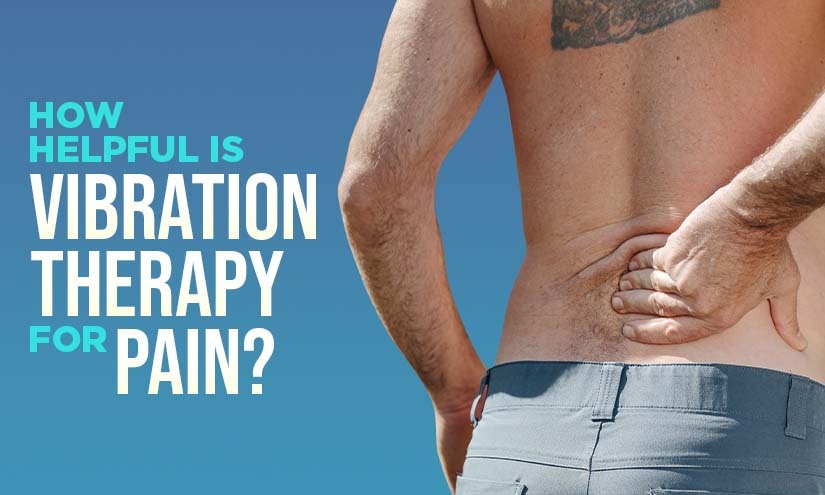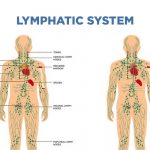How Helpful Is Vibration Therapy for Pain?

Vibration therapy (VT), commonly referred to as whole-body vibration (WBV), is a type of exercise that uses high-frequency vibrations at its core. The vibrations vary in intensity, typically ranging between 5 – 40 Hz. The activity is performed on special equipment known as a vibration plate, body vibration machine or a vibrating platform.
Over the past couple of decades, VT has been the subject of numerous scientific studies, the majority of which show some pretty positive results. So far, the therapy has been found beneficial for reducing weight, improving blood circulation, increasing bone mineral density, and strengthening muscles. But how about pain? Can you use vibration therapy for pain? And if yes, how exactly? Let’s find out together!
Can vibration plates help with pain?
The regular use of vibration plates has been associated with some truly impressive benefits. The platforms emit mechanical oscillations which travel through your body, stimulating muscles to contract at a greater rate. That, in its turn, leads to increased oxygen consumption by the myocytes (muscle cells), raised muscle tissue temperature, improved blood flow, and elevated electromyographic activity.
All of the above have a positive effect on muscle strength, mass, and toning. But this is not all. According to the Pain Mechanisms theory by Melzack and Wall, the mechanical vibrations that pass through the body lead to the activation of the so-called inhibitory interneurons. These are a type of nerve receptors that play a major role in nerve cell signaling. As a result of their activity, the human body experiences fewer ache sensations.
In other words, people with higher inhibitory interneurons activity possess a higher pain tolerance and vice versa. Therefore, vibration plates, as a means for producing mechanical vibrations, represent a useful tool for ache control and reduction. 15 – 20 minutes a day, 3 – 4 days a week are more than enough for you to feel the difference in physiological pain perception.
Is vibration good for nerve pain?
Typically, whole-body vibration is performed on vibrating plates that use frequencies between 5 – 40 Hz, amplitudes within the range of 1 – 8 mm, and G-forces up to 25 G’s. When users stand, sit or lie down on them, they expose their bodies to a set of mechanical oscillatory stimuli, traveling from the area of contact towards the inner body. As a result, people experience better balance, stronger muscles, and denser bones, which lead to a decreased chance of future painful experiences.
Furthermore, vibration therapy accelerates the remodeling of damaged tissues – a process that has been associated with reduced nerve pain in the long run. And last but not least, the mechanical oscillations emitted by the vibrating equipment have been found to alleviate painful experiences through the inhibition of Ruffini’s corpuscles. They are a type of mechanoreceptors located under the skin and responsible for the transportation of various external senses, including aches.
So far, WBV has been found helpful for tackling pain in the following medical conditions:
- Osteoarthritis
- Rheumatoid arthritis
- Lower backache
- Fibromyalgia
- Diabetic peripheral neuropathy
Does vibration help inflammation?
Apart from the above-mentioned benefits of WBV, the exercise appears to be useful in fighting off inflammation too. A recent study published by the International Journal of Molecular Science revealed that the mechanical oscillations emitted by the plate lead to reduced inflammatory responses in the body. According to the study, the positive health effect is achieved via the increase of macrophages – a specialized type of immune cells that fight off pathogens and decrease inflammation.
The vibration exercise favors the proliferation of healthy gut bacteria, thus leading to an improved microbiome. The term microbiome refers to a group of beneficial microorganisms found in the body which work in unison against external invaders and other forms of foreign body attacks. Additionally, the microbiome is responsible for optimal digestion and has been associated with reduced levels of inflammation.
On the flip side, an imbalanced microbiome – a condition known as dysbiosis – has been linked to many unwanted health disturbances, such as bloating, constipation, diarrhea, poor digestions, and elevated levels of body inflammation. Furthermore, whole-body vibration has been proven to strengthen the immune system and aid lymphatic drainage, both of which contribute to chronic inflammation.
Can you use vibration therapy for pain?
Lately, the effect of vibration therapy for pain relief has been a subject of numerous scientific studies. The evidence suggests that the therapeutic activity tackles the painful sensations in several different ways. Firstly, regular exposure to high-frequency oscillations blunts the body’s ache sensitivity, thus decreasing your pain threshold.
Secondly, while traveling through the body, the vibrations strengthen tissues and joints, ultimately resulting in decreased tightness, stronger tissues, improved motion, and joint alignment. And thirdly, the Vibro exercise helps decrease the repetitive occurrence of aches by preserving the normal functioning of your body’s systems as you age. Below are three common types of pain that can be successfully tackled by WBV.
- Neuropathic pain – WBV has been found to impose a positive long-term effect on neuropathic pain which is observed in patients suffering from diabetes;
- Lower back pain – the regular use of the vibrating platform has been linked to a positive transformation of the nervous system, thus contributing to a prolonged relief from low backache, and the sensitivity which usually accompanies the condition;
- Muscle pain – there is an extensive amount of scientific studies investigating the effects of vibration therapy for pain in muscle tissue. The results reveal that the regular application of the therapy leads to increased muscle fiber strength, boosted muscle power, elevated kinesthetic, improved mobility, and raised blood flow. All of these effects combined have been found to positively affect painful sensations in muscle tissue.
Conclusion
Pain is an unpleasant condition that comes and goes and can occur anywhere in your body. If the sensation stays for longer (over 3 months), it becomes chronic and can pose a huge negative effect on your day-to-day activities. That includes your social life, work, and the way you look after yourself.
That, in its turn, could lead to the development of depression, insomnia, and anxiety. The response forms a never-ending vicious cycle that has decreased the life quality of millions of people worldwide.
Luckily, it has become evident that through the regular use of vibration therapy, you can decrease the painful sensations in many parts of your body. As little as 15 – 20 minutes a day, 3 – 4 days a week are enough to fight off aches and improve your quality of life.
References (in order of appearance)
Melzack, R. and Wall, P. D. (1965). Pain mechanisms: A new theory. Science 150, 971–978.









